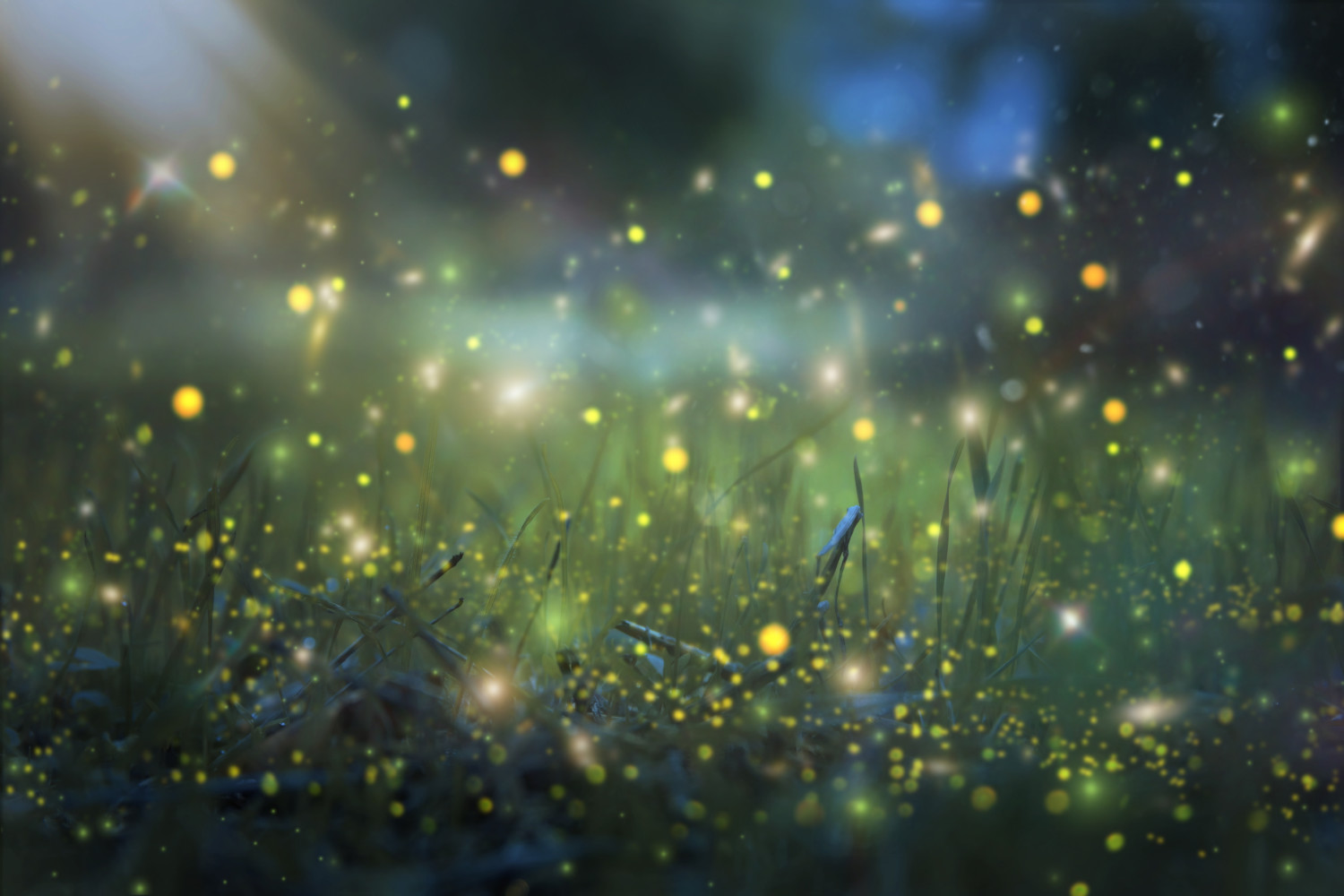Summertime means days out in the sun and evenings under the stars. The season also evokes memories of time spent by the pool or in front of campfires and admiring the flicker of lightning bugs — or fireflies — in your backyard. If you’re lucky enough to be in an area still rife with glow-in-the-dark insects, you might be wondering what they’re actually called, and if fireflies and lightning bugs are the same animal.
It turns out, they’re absolutely the same insect. The name you give these twinkling bioluminescent bugs depends on where you’re from.
Lightning Bugs Are Beetles Whose Numbers Are Decreasing
While there are several different species of fireflies, none are actually flies; they’re beetles. The names “firefly” and “lightning bug” originated because of the flashes of light the critters give off. Regardless of what you call them, though, the names refer to the same insect. Or more accurately, they refer to 2,000 species of insects in the order Coleoptera, family Lampyridae, 170 of which can be found in North America. Not all of them glow.
Lightning bugs are found across the U.S. in parks, gardens, woodland edges, meadows and other natural habitats, but are most likely to be spotted on summer evenings. The National Wildlife Federation reports that adult fireflies eat nectar or pollen, or surprisingly, nothing at all (they only live for about two months). Additionally, firefly larvae eat snails, worms and slugs after injecting a numbing chemical to disable prey.
If you think you might be seeing fewer lightning bugs than you did as a kid, you may be right. Their numbers are decreasing as a result of pesticide use, loss of habitat and light pollution. Light pollution is a danger, researchers think, because it disrupts mating, makes it harder for fireflies to find their food, and causes them to lose track of their time and position. A number of species are now tracked on the International Union for Conservation of Nature (IUCN) Red List.

Lightning Bugs Are The Most Efficient Light Sources In The World
While we might think at first glance that these beautiful insects are simply putting on a show for us, researchers believe the beetles are communicating. The bioluminescent flashes may warn predators of their bitter taste — fireflies can be poisonous to predators. They also appear to be used for mating or to attract food sources (like other fireflies).
The light these insects emit is caused by a chemical reaction occurring inside light-producing organs on the underside of the abdomen. And adult fireflies aren’t the only ones to glow — their eggs have been known to flash in response to gentle tapping or vibrations. Additionally, the effect differs by species. For example, in some lightning bug species, only the female can emit light, while in others both sexes do.
Firefly lights are considered the most efficient lights in the world because 100% of the energy they create is emitted as light. With an incandescent bulb, 10% of its energy is emitted as light and the rest as heat. In a fluorescent bulb, 90% of its energy becomes light while the rest is heat. The lack of emitted heat is why scientists refer to firefly lights as “cold lights.”
The Name You Use May Be Determined By Your Location
A researcher from the University of Cambridge polled 10,000 Americans around the country, asking what they called “the insect that flies around in the summer and has a rear section that glows in the dark.” The responses cleared the air on why how the discrepancy likely originated.
In this survey, 39.8% responded that they used both “firefly” and “lightning bug” interchangeably. Another 30.4% felt “firefly” was correct while another 29.1% said “lightning bug.” The study showed “firefly” was more popular in the West while “lightning bug” was more common in parts of the Midwest, South and the Mid-Atlantic. A relatable analogy would be to say the lightning bug is to firefly as soda is to pop.
A meteorological researcher determined that areas where people say “lightning bug” coincide with the parts of the country where lightning strikes are more frequent. The word “firefly” is more common in the West, which happens to be the region in the U.S. that experiences the most wildfires. However, no further data is available to support the idea that this correlation is anything more than a coincidence.
In Europe, you may also find these insects, especially in the larval stage, called glowworms.

Did you ever try to catch lightning bugs as a child? Do you have some near you now?
This story originally appeared on Simplemost. Checkout Simplemost for additional stories.


